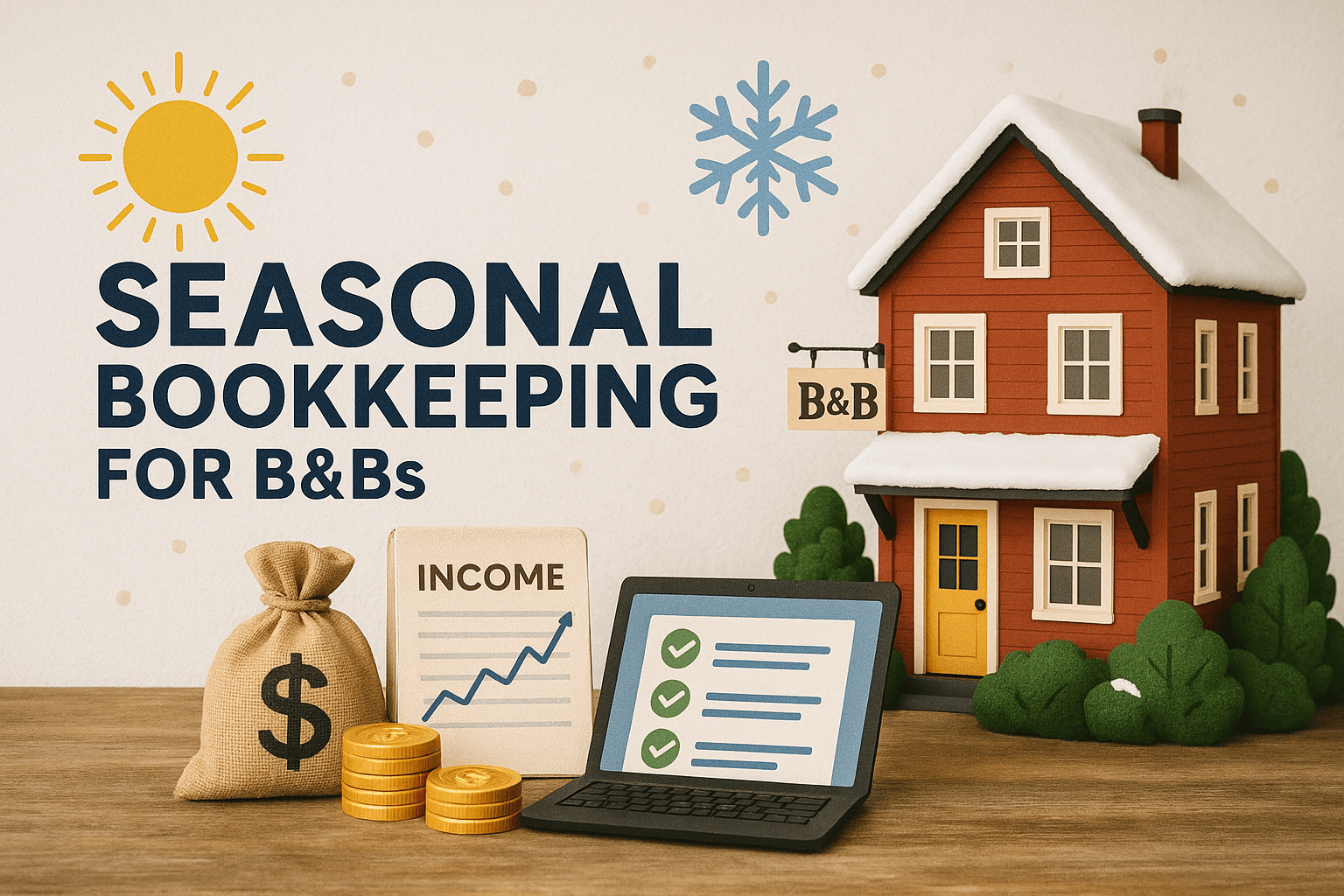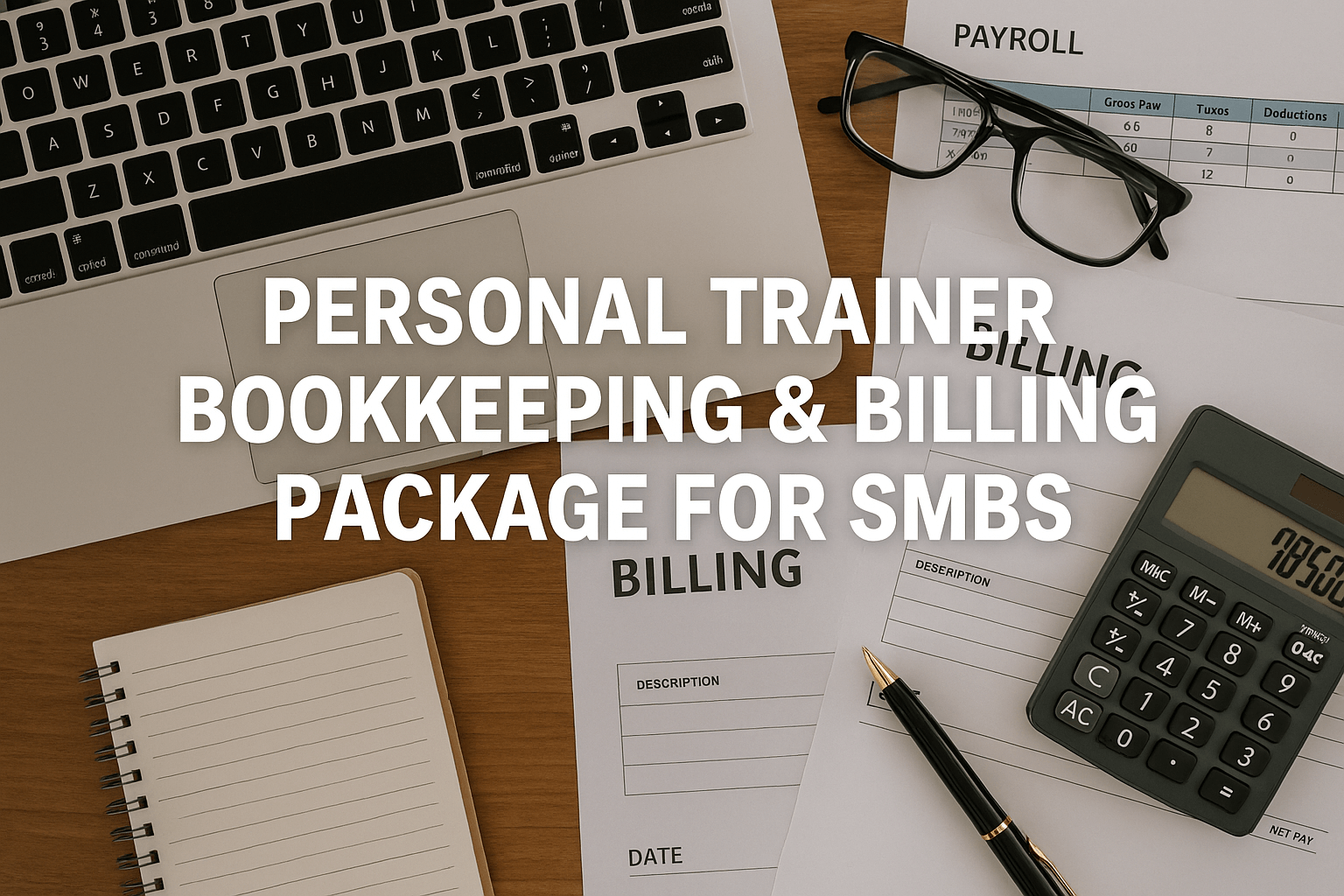BNB Accounting Platform Management:
Streamline Finances
BNB accounting platform management is the integration of specialized financial software that automates bookkeeping, payment processing, and compliance tracking for short-term rental operators managing single or multiple properties. These platforms streamline finances by automatically categorizing rental income, tracking maintenance expenses, reconciling payouts, and generating tax-ready reports—allowing hosts to reclaim countless hours spent on manual bookkeeping.
Over my 20+ years supporting hospitality and vacation rental businesses, I’ve watched owners struggle with fragmented spreadsheets, missed deductions, and complex tax filings. But here’s what changed the game: when a host implements the right bnb accounting platform management system, tax season transforms from a crisis into a manageable process, and hosts suddenly see hidden revenue opportunities they were missing. In this guide, I’ll walk you through exactly how these platforms work, what separates the best from the rest, and the three critical steps to implementing one that actually fits your operation—whether you’re managing one property or a portfolio of fifteen.

What is BNB accounting platform management and how do you get it right?
- BNB accounting platform management automates income tracking, expense categorization, payment reconciliation, and tax compliance for short-term rental businesses.
- It integrates directly with booking platforms (like Airbnb, Vrbo, and direct booking systems) to pull transaction data automatically.
- Real-time financial dashboards give you instant visibility into profitability, occupancy rates, and cash flow across all your properties.
- Automated tax reporting captures all eligible deductions, potentially saving hosts 20-40% during tax season through better documentation.
- Multi-property support allows you to track rental income reconciliation across numerous units while maintaining separate financial records for each asset.
The Core Problem: Why Traditional Bookkeeping Fails BNB Hosts
Most vacation rental owners inherit a fragmented tech stack—one app for bookings, another for payments, spreadsheets for expenses, and a prayer for tax time. This creates blind spots.
A 2016 study by PricewaterhouseCoopers revealed that more than 90% of spreadsheets contained errors, and alarmingly, more than 90% of spreadsheet users were convinced their models had no errors. When you track finances manually, deductions fall through the cracks. Airbnb service fees, cleaning supplies, maintenance calls, platform subscriptions—these expenses live across multiple inboxes and credit card statements, invisible to your year-end calculations. A dedicated bnb bookkeeping platform captures these automatically, ensuring nothing is missed when the IRS comes knocking.
Essential Features of the Best Accounting Platform for BNB Hosts
An effective best accounting platform for bnb hosts goes far beyond simple number entry.
Automated income and expense tracking
Look for platforms that sync directly with your payment processors and booking channels. The software should categorize rental income by property and source (Airbnb, Vrbo, direct bookings), then automatically segregate expenses—maintenance and expense tracking separated from operational costs, management fees distinguished from cleaning supplies. This level of organization is non-negotiable for accurate reporting and strategic decision-making.
Channel manager integration and real-time syncing
Your accounting shouldn’t live in isolation. Top platforms integrate with property management software, channel managers, and payment processors. This integration is critical because when a guest books a property on multiple channels simultaneously, your accounting system needs to understand that and adjust revenue projections accordingly. Channel manager integration ensures your financial data reflects what’s actually happening across all your rental platforms.
Multi-property support and occupancy analytics
If you’re scaling beyond one property, you need a system designed for growth. The best solutions offer accounting platform for multiple bnb properties with consolidated dashboards showing performance across your entire portfolio while maintaining granular tracking for each unit. More sophisticated platforms layer in occupancy and revenue analytics like RevPAR—showing you which properties generate the highest per-night revenue, which have the highest maintenance costs, and where seasonal trends are shifting your cash flow.
How BNB Accounting Platform Management Transforms Your Tax Season
Tax compliance is where these systems earn their keep.
Federal tax law allows host tax reporting deductions for nearly every expense related to your rental operation—but only if you have receipts and documentation. A proper accounting platform stores everything digitally, organized by category, date, and property. When your accountant asks “what was your total maintenance spend on Property B in Q3?”—you have the answer in seconds, not weeks of email searching.
The difference between a tax compliant accounting platform for bnb rentals and a generic accounting tool is in the mapping. Dedicated platforms come pre-configured with rental-specific categories: rental insurance, utility allocations, depreciation tracking, and short-term rental specific deductions like Qualified Business Income (QBI) deductions. This pre-built structure means you spend less time categorizing and more time analyzing your business.
Rather than scrambling in April to piece together your financial picture, a robust bnb management software with accounting and booking capability generates quarterly reports automatically. You see exactly how much you’ve earned, what you’ve spent, and what tax liability you’re building—allowing you to set aside the right amount each quarter and avoid April surprises.
Case Study: How a Multi-Property Host Scaled From Chaos to Control
The Situation: A mid-sized vacation rental management company was manually tracking owner payments across 30+ listings using spreadsheets and email. The finance team faced the following challenges: manually downloading more than 30 bank statements monthly, spending 5–10 hours weekly on reconciliation, and experiencing frequent missed owner disbursements and inconsistent financial records.
The Solution: After implementing integrated accounting software combined with a property management system and automated payouts reconciliation, the company achieved dramatic results.
The Results:
- Automated reconciliation coverage increased to 95%, with monthly manual intervention time dropping from 80 hours to 2 hours per month
- Avoided costly payout errors that had previously required dispute resolution
- Reclaimed approximately 400+ hours annually, representing over one workweek per month freed up for strategic work
- Increased owner trust and retention due to faster, more accurate disbursement reporting
“The platform didn’t just save us time,” the operations manager noted. “It gave us financial clarity we never had before. We can now see exactly which properties are performing and make data-driven decisions instead of guessing.”
Manage guests, not spreadsheets. Explore bookkeeping services tailored to B&B owners — click here.
Comparing Top Platforms: Which Accounting Solution Fits Your Scale
| Platform | Best For | Key Strength | Price | Multi-Property Scaling |
| QuickBooks Online | Mid-scale operators (3-10 properties) | Comprehensive integrations (750+), excellent tax reporting | $35–$235/month | Excellent—supports 5-25 users depending on tier |
| Xero | Growing portfolios (5-20+ properties) | Real-time financial dashboards, automated invoicing, strong multi-entity support | ~$15–$65/month | Excellent—designed for multi-property operations |
| Digits AI | Tech-forward operators wanting hands-off bookkeeping | AI-native automation, learns your categorization, managed accounting partnerships | Free tier available; premium starts at $60/month | Very Good—unlimited bank connections, AI learns your business |
| Wave | Solo operators and startup hosts | Completely free invoicing and accounting | Free | Limited—single-entity focus, better for 1-2 properties |
| Zapier/Synder Integrations | Custom-stacked operations | Connects your fragmented tools into one workflow | $15–$100/month depending on complexity | Good—if you want to build your own stack |
Building Your Implementation Roadmap:
How to Transition to Automated Bookkeeping for Airbnb and BnB Hosts
Switching platforms feels daunting, but a structured approach eliminates the chaos.
1st Phase: Audit and preparation (Weeks 1–2)
Export your last 12 months of financial data from your current system. List every platform where money moves (Airbnb, Vrbo, Stripe, PayPal, your bank). Document recurring expenses and identify which properties require separate entity tracking. This groundwork prevents migration errors. During this phase, decide whether you need a short-term rental financial management platform that handles everything or whether a more modular approach (accounting platform + separate property management tool) fits your workflow better.
2nd Phase: Platform selection and setup (Weeks 3–4)
Run free trials of your top two contenders with real data. Does their bnb bookkeeping workflow match how you think about your business? Can you easily configure it to track the specific metrics you care about—like revenue per available room (RevPAR) or property-level profitability? Test their integrations with your booking platforms and payment processors. This is where you determine whether a platform can handle your rental income reconciliation best practices process smoothly.
3rd Phase: Selective migration and parallel running (Weeks 5–8)
Don’t go cold-turkey. Start with one property in the new system while keeping your old system running. This lets you validate that the new platform correctly categorizes your actual transactions without risking financial record gaps. Once you’re confident, migrate property by property, validating each step.

Avoiding Common Implementation Mistakes
Most hosts who implement these systems struggle not because the software is complex, but because they don’t plan the migration properly.
Mistake #1: Incomplete historical data migration
If your opening balances and prior transactions don’t import correctly, your reports will be meaningless. Ensure you’re migrating complete bank statements and transaction history—not just recent activity.
Mistake #2: Misconfigured multi-property tracking
Many platforms offer multi-property support, but if you set it up incorrectly, expenses from Property A bleed into Property B’s records. Spend time in setup ensuring that expense categories, income sources, and chart of account structures are configured correctly for each property’s legal structure.
Mistake #3: Neglecting integration stability
A platform might integrate beautifully in the demo but sync slowly when you go live with five properties and years of data. Validate that integrations are truly real-time before committing to them.
Mistake #4: Skipping the “why” conversation with your accountant
Before implementing a new accounting platform, loop in your host tax reporting professional. They may have requirements—specific chart of account structures, depreciation tracking preferences, or quarterly reporting formats—that should inform your platform choice. A system that looks perfect in isolation but doesn’t integrate with your accountant’s workflow creates friction later.
Consider Marco and Selene, short-term rental investors who initially qualified for favorable tax treatment. However, their prior accountant failed to recognize this advantage and opted out of bonus depreciation—an irrevocable mistake. After engaging a real estate tax specialist, they recovered $9,500 in tax savings for the amended year, secured an additional $11,000 in current-year savings, and locked in $90,000+ in accelerated deductions over the following five years. The lesson? Platform selection should include consultation with tax advisors who understand short-term rental strategies.
The Competitive Advantage: Why BNB Hosts Are Winning With Automated Accounting
According to Hostaway’s 2025 Summer Snapshot Report, AI adoption among short-term rental hosts jumped from 60% to 84% in a single year—the biggest shift across the entire vacation rental industry. Hosts who embrace bnb accounting platform management aren’t just saving time—they’re gaining strategic advantages.
Traditional accounting means waiting weeks or months for financial reports. Automated systems give you real-time dashboards. You see a quiet month coming in your bookings and can immediately check whether it’s seasonal or a marketing problem. You notice a spike in maintenance costs and can investigate the root cause before it becomes a pattern.
When you’re considering expansion to a second property, a proper accounting system tells you exactly what profit margins you’re achieving on your first property—not a guess based on mental math. You can model whether a second property in a different market will maintain those margins or if the market dynamics are different. This clarity removes emotion from business decisions.
The IRS may never call, but if they do, an organized, automated accounting system is your best defense. You’re not scrambling to reconstruct transactions from memory or emails. Every receipt is documented, categorized, and time-stamped. This transforms a potential nightmare into a manageable compliance event.
Conclusion
Over my two decades building Complete Controller and supporting thousands of property managers and rental hosts, I’ve seen the same pattern: the moment someone stops manually juggling finances and starts using an integrated bnb accounting platform management system, their business transforms. They recover deductions they didn’t know existed. They see which properties are actually profitable—not which ones feel profitable. They go from dreading tax season to approaching it with confidence.
The global short-term rental market was valued at $134.51 billion in 2024 and is projected to reach $256.31 billion by 2030, growing at a compound annual growth rate of 11.4%. In this expanding market, the average Airbnb host earns approximately $13,800 annually, with average annual earnings for hosts increasing by 43.8% since the beginning of 2021. The hosts capturing the highest earnings and growing fastest are those who operate like professional businesses, not part-timers.
BNB accounting platform management isn’t just a time-saver. It’s a business clarity tool. Whether you’re managing one property or a portfolio of fifty, the right system removes the friction, reduces errors, and lets you focus on what actually grows your rental business: guest experience, strategic pricing, and property optimization.
Ready to transform your rental finances? Start by auditing your current financial situation and running a free trial with one of the platforms we discussed. Most offer 30-day trials with real data. Give it two weeks. You’ll quickly see whether it’s the right fit for your operation.
Take control of your rental finances today. Visit Complete Controller to explore how our team can support your transition to automated bookkeeping, or to schedule a consultation with one of our rental accounting specialists.

Frequently Asked Questions About BNB Accounting Platform Management
What exactly is bnb accounting platform management?
BNB accounting platform management refers to specialized software that automates financial tracking, expense categorization, payment reconciliation, and tax compliance for short-term rental hosts. It integrates with booking platforms and payment processors to eliminate manual data entry and ensure accurate financial records.
How much time will I actually save switching to automated bookkeeping for Airbnb and BnB hosts?
Most hosts report saving 8-12 hours per month on bookkeeping tasks—time previously spent on data entry, expense tracking, and report generation. For multi-property operators, time savings scale significantly; managing three properties manually can consume 20-25 hours monthly, while automated systems reduce that to 5-6 hours.
Can a bnb management software with accounting and booking capabilities really handle tax compliance?
Yes, when properly configured. Dedicated platforms come with rental-specific tax categories, automatically track deductible expenses, and generate quarterly reports. However, they work best as a foundation for your accountant—you still need a tax professional to review your situation and ensure you’re optimizing your specific tax situation.
What features matter most in choosing the best accounting platform for bnb hosts?
Prioritize: (1) automated integration with your booking platforms, (2) multi-property support if you own multiple units, (3) channel manager integration for listings across multiple sites, (4) rental-specific expense categories, and (5) real-time reporting dashboards.
How do I know if my accounting platform has true automated payouts reconciliation?
Your platform should automatically match payouts you received to invoices you sent, flag discrepancies for review, and track partial payments or held amounts. You should be able to run a reconciliation report and see all payments accounted for without manual cross-referencing between systems.
Sources
- Complere Info System. (2024). How Automation Solved 90% of Payment Reconciliation Problems. https://complereinfosystem.com/automation-payment-reconciliation-solution/
- Complete Controller. Efficient Business Finance Management. https://www.completecontroller.com/efficient-business-finance-management/
- Complete Controller. Importance of Reconciling Your Accounting Statements Regularly. https://www.completecontroller.com/importance-of-reconciling-your-accounting-statements-regularly/
- Complete Controller. Tax Preparers Roles Qualifications. https://www.completecontroller.com/tax-preparers-roles-qualifications/
- Grand View Research. (2024). Short-term Vacation Rental Market Report 2025-2030. https://www.grandviewresearch.com/industry-analysis/short-term-vacation-rental-market-report
- Hostaway. (2025). Summer 2025 Report: How 40% of Short-Term Rental Operators Boost Occupancy and Rates. https://www.hostaway.com/blog/short-term-rental-operators-boost-occupancy-and-rates/
- Internal Revenue Service. Publication 527: Residential Rental Property. https://www.irs.gov/publications/p527
- Investopedia. Revenue Per Available Room (RevPAR). https://www.investopedia.com/terms/r/revpar.asp
- Ravikumar, S. (2023). Impact of Financial Accounting Software on Financial Accuracy and Compliance in Small Businesses. Journal of Artificial Intelligence, Machine Learning and Data Science. https://urfjournals.org/open-access/impact-of-financial-accounting-software-on-financial-accuracy-and-compliance-in-small-businesses.pdf
- Remote Books Online. (2025). Real Estate Bookkeeping Costs: Full Breakdown. https://www.remotebooksonline.com/blog/how-much-do-bookkeeping-services-cost-for-real-estate-businesses/
- Search Logistics. (2025). Airbnb Statistics [2025]: User & Market Growth Data. https://www.searchlogistics.com/learn/statistics/airbnb-statistics/
- TGG Accounting. (2025). How Much Does a Bookkeeper Cost? Guide to Bookkeeping Fees. https://tgg-accounting.com/how-much-does-bookkeeper-cost/
- The Real Estate CPA. (2024). Case Studies: Recovered $9,500 in Tax Savings with $90,000+ in Preserved Future Deductions. https://www.therealestatecpa.com/case-studies/
- Wikipedia. Bank Reconciliation. https://en.wikipedia.org/wiki/Bank_reconciliation
 About Complete Controller® – America’s Bookkeeping Experts Complete Controller is the Nation’s Leader in virtual bookkeeping, providing service to businesses and households alike. Utilizing Complete Controller’s technology, clients gain access to a cloud platform where their QuickBooks™️ file, critical financial documents, and back-office tools are hosted in an efficient SSO environment. Complete Controller’s team of certified US-based accounting professionals provide bookkeeping, record storage, performance reporting, and controller services including training, cash-flow management, budgeting and forecasting, process and controls advisement, and bill-pay. With flat-rate service plans, Complete Controller is the most cost-effective expert accounting solution for business, family-office, trusts, and households of any size or complexity.
About Complete Controller® – America’s Bookkeeping Experts Complete Controller is the Nation’s Leader in virtual bookkeeping, providing service to businesses and households alike. Utilizing Complete Controller’s technology, clients gain access to a cloud platform where their QuickBooks™️ file, critical financial documents, and back-office tools are hosted in an efficient SSO environment. Complete Controller’s team of certified US-based accounting professionals provide bookkeeping, record storage, performance reporting, and controller services including training, cash-flow management, budgeting and forecasting, process and controls advisement, and bill-pay. With flat-rate service plans, Complete Controller is the most cost-effective expert accounting solution for business, family-office, trusts, and households of any size or complexity.
 Reviewed By:
Reviewed By:













